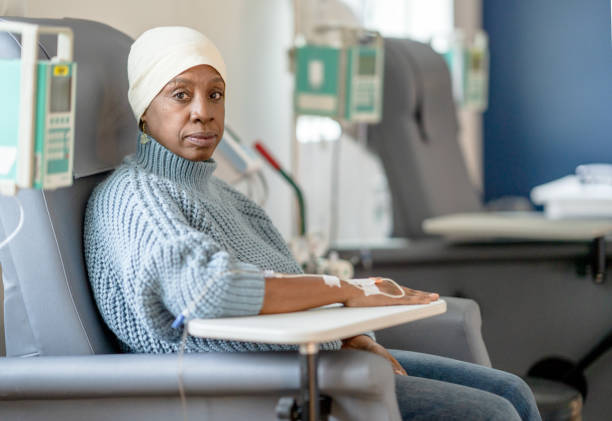
Melanoma is often thought of as a disease that primarily affects white patients, but that misconception has deadly consequences. While melanoma is less common in Black individuals, Black patients are significantly more likely to die from it. One of the biggest reasons? Delayed diagnosis.
Melanoma is often caught at later stages in Black patients, when it’s harder to treat and more likely to be fatal. A rare but aggressive form—acral lentiginous melanoma—is more common in Black individuals and typically appears in areas often overlooked, such as the palms, soles of the feet, or under the nails.
Although the incidence is lower, the mortality rate is higher, which points to systemic gaps in awareness, screening, and care.
But what if something as accessible as diet could help shift the odds?
Emerging research presented at the 2025 American Society of Clinical Oncology (ASCO) Annual Meeting in Chicago is uncovering how a fiber-rich, whole-foods-based diet may help support better outcomes for patients receiving immunotherapy, a treatment increasingly used in melanoma care. And this approach may offer an affordable, scalable way to support Black patients, many of whom face barriers to early diagnosis and high-quality treatment.
RELATED: Melanoma: What It Is, Causes, Types, Symptoms & Treatments
The Gut-Immune Connection: Why Fiber and Food Matter in Cancer Care
At MD Anderson Cancer Center, Dr. Jennifer McQuade, Associate Professor of Melanoma Medical Oncology, is leading cutting-edge research on the link between diet, the gut microbiome, and response to immunotherapy.
The gut microbiome—trillions of bacteria that live in your digestive system—has a surprising influence on how well the immune system works. In 2015, research teams discovered that certain gut bacteria improve how the body responds to immunotherapy, a treatment that helps the immune system attack cancer.
Those helpful bacteria? They thrive on dietary fiber.
This insight sparked a new hypothesis: if we feed the right bacteria through diet, can we boost immunotherapy’s effectiveness?
RELATED: Do You Need More Dietary Fiber?

Inside the Study: High-Fiber Diets, Real Results
Dr. McQuade’s team conducted a rigorous, controlled feeding study. They recruited melanoma patients about to begin immunotherapy and split them into two groups:
- One group followed a high-fiber diet—ramping up to 50 grams a day—built around whole foods like vegetables, legumes, and grains.
- The second group followed a control diet with less than 20 grams of fiber, still healthy but more typical of the standard American diet.
The findings were striking:
- Seventy-seven percent of patients on the high-fiber diet experienced tumor shrinkage, compared to just 29 percent in the control group.
Even though the study was exploratory and more research is needed, the message is clear—what you eat can influence how your body fights cancer.
Why This Matters for Black Patients With Melanoma
Melanoma in Black patients is too often detected late, and access to cutting-edge treatments like immunotherapy can vary based on where and how someone receives care. But diet? That’s something patients can begin to change today—if they have the right information and support.
This research opens the door to a low-cost, widely accessible strategy that could help level the playing field in melanoma care, especially when integrated into community-based education and prevention efforts.
Dr. McQuade emphasizes that this isn’t about fad diets or supplements—it’s about going back to the basics: whole, plant-based foods, rich in fiber, prepared in ways that fit the cultural diets of each community.
RELATED: 5 Reasons to Fill Up On Fiber

Breaking It Down: What Patients Can Do Right Now
You don’t need to jump to 50 grams of fiber overnight. Dr. McQuade says even 30 grams per day can make a meaningful difference. The bigger shift is moving from processed foods to real, whole ingredients.
Here’s what she recommends:
- 2/3 of your plate: plant-based foods like beans, grains, and vegetables.
- 1/3 of your plate: protein—lean meats, tofu, legumes.
- Choose foods that don’t come in packages—or if they do, you should recognize every ingredient.
- Cut back on refined carbs and added sugars, which mostly come from processed foods, not just desserts.
What’s Next: Scaling Research, Reaching Communities
Dr. McQuade and her team are now working on sustainable approaches that patients can stick with. That includes combining prebiotic-rich foods with nutrition coaching to help people build long-term habits.
She’s also pushing to expand this research to other types of cancer—and to diverse patient populations, including those often left out of traditional clinical trials.
That means customizing dietary interventions to reflect cultural food traditions, like incorporating familiar ingredients and preparation methods used in Black, Hispanic, and other communities.
“We know that one-size-fits-all won’t work,” Dr. McQuade tells BlackDoctor.org. “Food has to be familiar, accessible, and something people actually enjoy if we want these changes to last.”
The Bottom Line
For Black patients with melanoma, who face higher mortality despite lower incidence, early detection and better access to treatment are critical. But diet could become a powerful complementary tool.
A fiber-rich, whole-food diet isn’t just about prevention anymore—it may play an active role in how the body responds to cancer treatment. And that makes it an important conversation to have with your doctor, no matter your background or diagnosis stage.
“We all know what we should be eating,” Dr. McQuade adds. “But now we’re showing that it might actually help the immune system do its job. That’s empowering.”
Resources & Next Steps for Patients:
- Ask your oncologist or care team about nutrition and cancer.
- Connect with community programs that offer access to fresh produce and dietitian support.
- Focus on one change at a time—add a bean-based dish, switch to whole grains, or prep a meal with more vegetables.
- Advocate for education and outreach in communities where melanoma is often overlooked, especially in Black and underserved populations.









